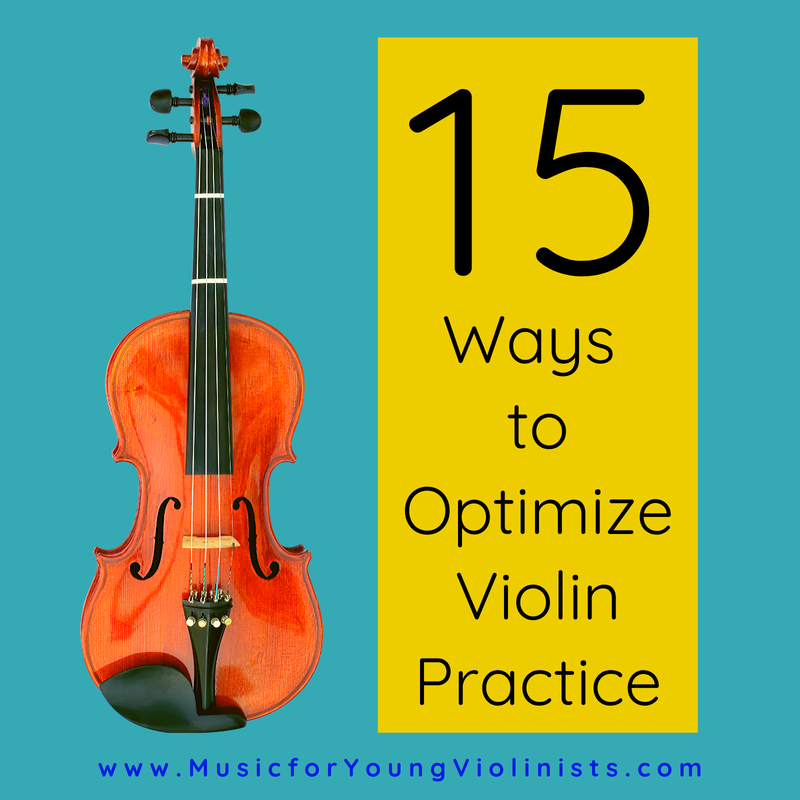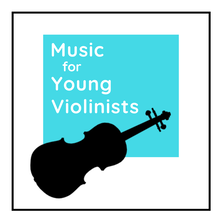|
Warm-Up Routines for Violin (tutorial video & PDF chart) uses a simple but powerful open string exercise to learn 13 different technical exercises for beginning, intermediate, and advanced level violin. This resource is for both teachers and students. Teachers can use this to help create a framework of goals to help their students advance the quality of their music-making while developing technique and tone production. This resource is also designed for students to identify what level they are at and take responsibility for ensuring they accomplish the expectations that should be studied at that level. By the end of this tutorial you will learn: 1- Why it is so important to do this warm-up, holding on to the edge of the violin even if you are no longer a beginner. 2- Another reason why every violin teacher should purchase a roll of painter's tape (seriously, this stuff has no end of useful purposes & you will thank me later). 3- A weird but super cool way to use the violin to play the bow (yep, that's not a typo, you read that correctly). Watch the tutorial video below and download the free accompanying PDF chart on the M4YY FREEBIES page. Learn more about the "Violin Teaching Supplies - From a Hardware Store" video referenced in the Warm-Up Routines for Violin tutorial below. Learn more about the "Tiger Paws & Table Corners" technicals also referenced in the Warm-Up Routines for Violin video below.
0 Comments
Learn 15 ways to optimize your practice sessions with this free downloadable chart and tutorial video. If you have followed this project for a while you may know that one of the most profound things I ever did in my teaching career was to spend a week watching my students practice. You can learn more about what I discovered and how it was arranged here on The Practice Experiment. The 15 Ways to Optimize Violin Practice list and correlating video was created as a response to watching my students practice. Too often students were working hard but not progressing as far as they should because they were not practicing the right way. This list and video will help any violinist make better use of their practice time and reach their goals more efficiently. Teachers - Use this to better support teaching technique, as a reference to share with your students and for professional development to expand your skills. Students - Use this to help you practice more efficiently. Practicing smarter will help you progress faster. My passion is taking my 20+ years of teaching experience and helping you know the fastest path to success through the trials and errors I had working with students these past 2 decades. Parents of Young Musicians - I know that one of the hardest jobs for you is keeping momentum in your home practice routine. Peruse the ideas on 15 Ways to Optimize Violin Practice and use the appropriate ones for your child to help keep practice creative, fresh and engaging with some new ideas. Print out the list below and keep in your violin folder as a reference. * Please note, some things on the list may not be clear to you until they are demonstrated in the accompanying video. 1- Left hand only (finger pop the notes while placing the violin upon the shoulder or down in "rest" position). 2- Right hand only (bow in the air, or make an open string reduction of the passage being worked on and play the open strings). 3- Use the “hand bow” by playing a passage with the bow hand's pinky side to feel and analyze string crossings (this is best explained by watching the video). 4- Play "air violin" (meaning no instrument) to work on the choreography and coordination involved in playing the violin. 5- Videotape self & watch. Many students are reluctant to view themselves since they focus on the parts of their playing they are dissatisfied with, but with a healthy mindset and specific goal to work on, this is one of the best ways to use your practice time. 6- Walk while playing. This will usually be awkward in the beginning but helps the player know if their playing is easy or not. If you can walk and play, this signifies that ample practicing has been achieved. Also, this helps keep the body relaxed overall to avoid tension and overuse injuries. 7- March while playing. Metronomes are fantastic, but the beat is interpreted thru the ear to the brain and then into the violin playing. A more sophisticated way to work on rhythm is to play while marching. It can feel complicated when first integrating this into violin playing but ultimately leads to better musicianship. 8- Sing for intonation, phrasing, dynamics & memorization. 9- Use an abacus or counting stones to count repetitions & set goals. Not only does this help achieve the intended repetitions, but it also serves as a release for the arms, so that discomfort due to muscle tension does not accumulate. 10- Add in some technical exercise for 30-60 seconds (i.e., the spider crawls, bunny flips, vibrato exercises & open string warm-ups). Click here for some ideas on what these can be. Continue adding in these at various intervals in a practice session. 11- Play with eyes closed to engage other senses. 12- Vision in your imagination. One way to do this is to lay down, which will also relax some of your back muscles that tend to get tight when playing the violin. 13- Watch your sheet music while listening to a professional performer. 14- Create a practice log to set goals for the practice session and reflect on what went well and what needs more attention next time. 15. Make it personal with your idea. Adding your unique idea to a practice session empowers you and engages you in the process. If you have a unique tip for optimizing violin practice, please add it in the comments below. We would love to hear from you! What is your favorite practice tip?
Please share with us in the comments below, thank you! |
Categories
All
Archives
February 2024
AuthorHi! It's me, Heather. I absolutely love working on the Music for Young Violinists project and all the many facets: blogging, website, music, teaching materials, freebies, videos, newsletter and giveaway contests. The best part is connecting with you so feel free to drop me a line. You can learn more about me on the "ABOUT" page. Thanks! |



 RSS Feed
RSS Feed
